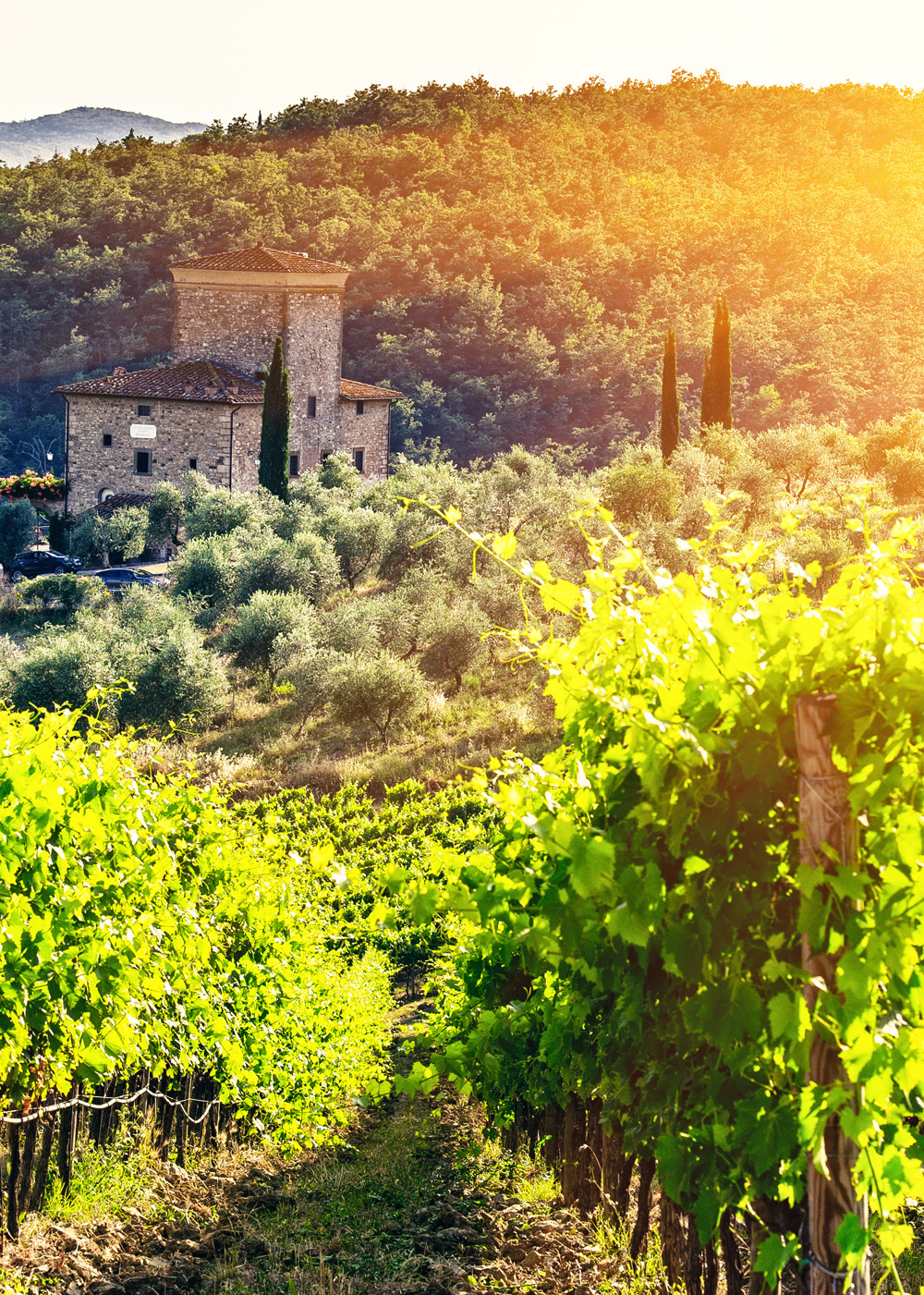Wines from Tuscany’s Chianti region have come a long way since the short, round, straw-wrapped bottles of decades past. Today, producers remember centuries-old traditions while exploring the benefits of modern technology to embrace a renaissance of high-quality wines in a range of styles. Read on to learn more about what makes Chianti such a special and exciting wine region.
Where is Chianti?
Chianti is located in central Tuscany – between Florence to the north, and Siena to the south. Wines from the smaller Chianti Classico zone are regarded as the region’s best. Beyond the boundaries of Chianti Classico, there are seven subzones. Chianti Rufina and Chianti Colli Senesi are two subzones of distinction.

Which Grapes are Used to Produce Chianti?
Wines from Chianti must currently be comprised of at least 70% Sangiovese, whereas the minimum rises to 80% for those from Chianti Classico. Varying amounts of other grape varieties, such as Colorino, Canaiolo Nero, Cabernet Sauvignon, Cabernet Franc, and Merlot may be authorized – depending on whether the wine is produced in Chianti, a subzone of Chianti, or Chianti Classico. Their inclusion in blends is always optional.
Common Label Designations
You will notice many different designations on the labels of Chianti wine you enjoy. We’ve outlined what the common label designations mean to help you better understand the differences.
Chianti Superiore – the wine cannot be released until at least September of the year following harvest.
Chianti Riserva – the wine must be aged for at least two years beginning January 1st of the year following grape collection.
Chianti Classico – the wine must come from the Chianti Classico zone and cannot be released until at least October of the year after harvest.
Chianti Classico Riserva – the wine must be aged for at least 24 months beginning January 1st of the year following grape collection, with three or more of those months in bottle.
Chianti Classico Gran Selezione – the wine must be produced from estate-grown grapes and aged for at least 30 months beginning January 1st of the year following harvest, with three or more of those months in bottle.

What’s the Deal with the Black Rooster?
The Black Rooster symbol, known in Italian as “Gallo Nero,” is used to identify wines produced by members of the Consorzio Vino Chianti Classico, a consortium founded to protect the reputation of wines from Chianti and later on, Chianti Classico. While membership is not a requirement to produce Chianti Classico, almost 96% of the zone’s wines come from member estates.
What Should I Eat with Chianti?
Wines from Chianti are known for red cherry, herb, and spice flavors, along with vibrant acidity and rustic tannins. They are usually medium- or full-bodied and make an excellent match for a variety of dishes like herb-crusted rack of lamb, steak florentine, pasta with marinara sauce, margherita pizza, mushroom risotto, and eggplant parmesan.
The wines of Chianti are still among the greatest values of Italy, and the fine examples of Chianti Classico Riserva and Gran Selezione often have the complexity and structure to gracefully age. While many New World producers have championed European grape varieties, Chianti brings a unique Old World authenticity to the table that is worth seeking out.



